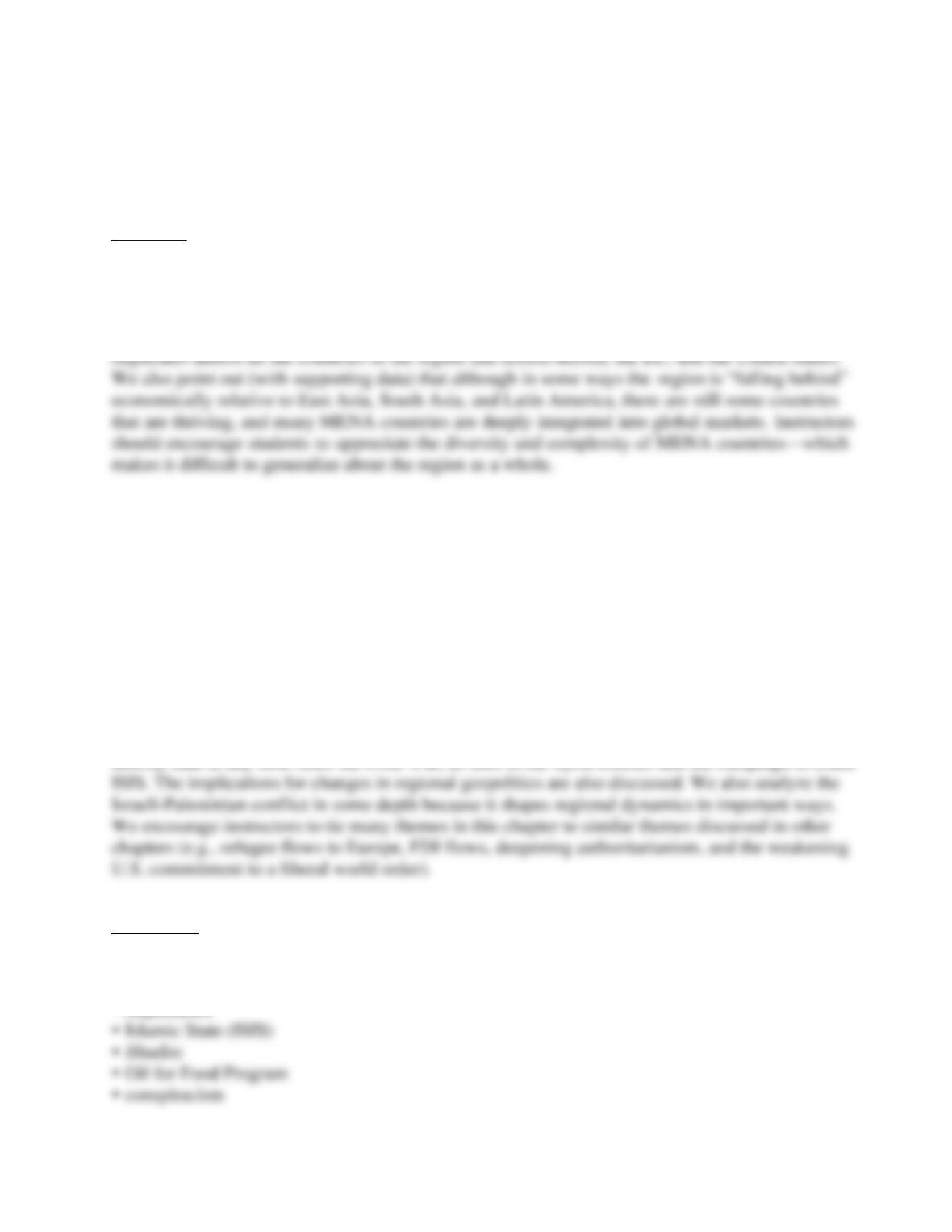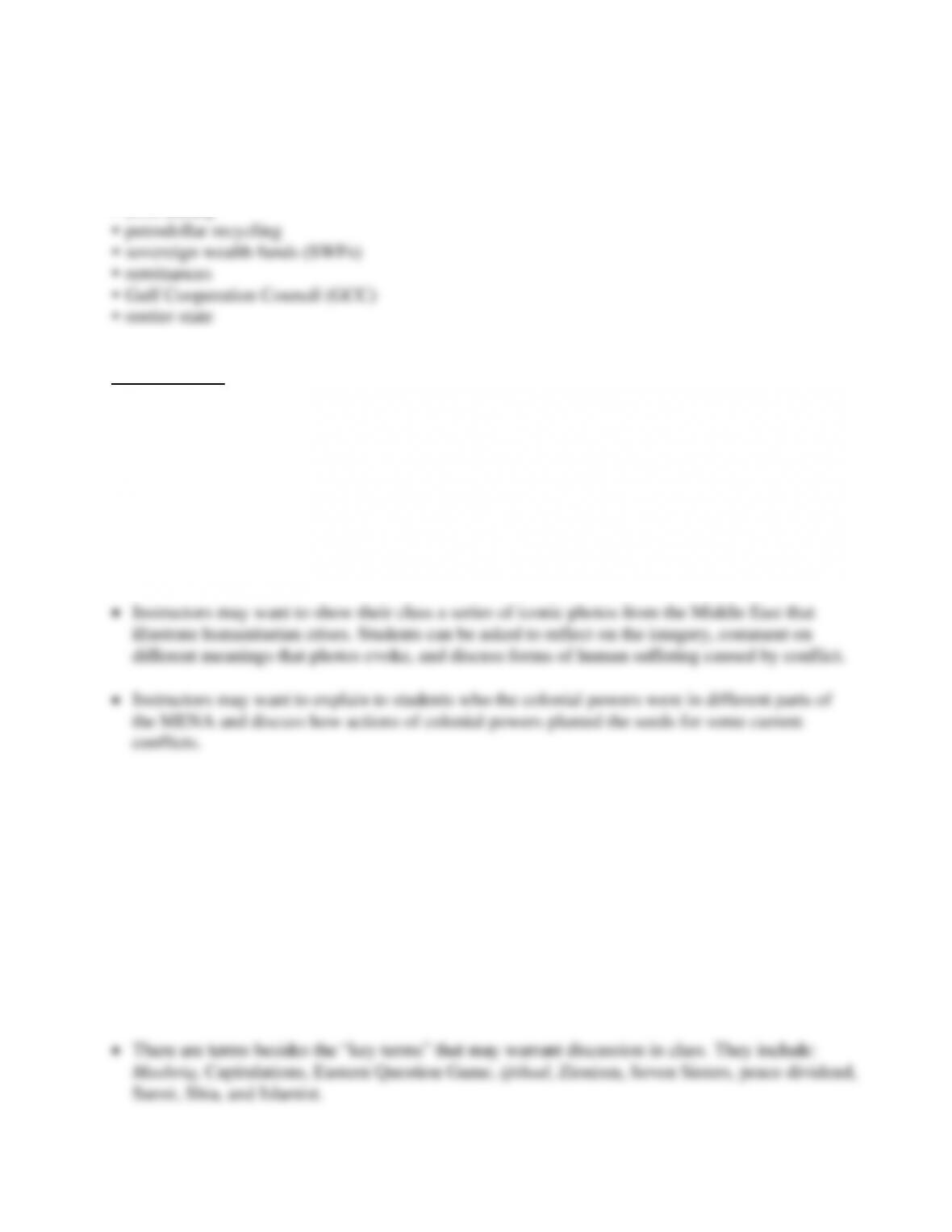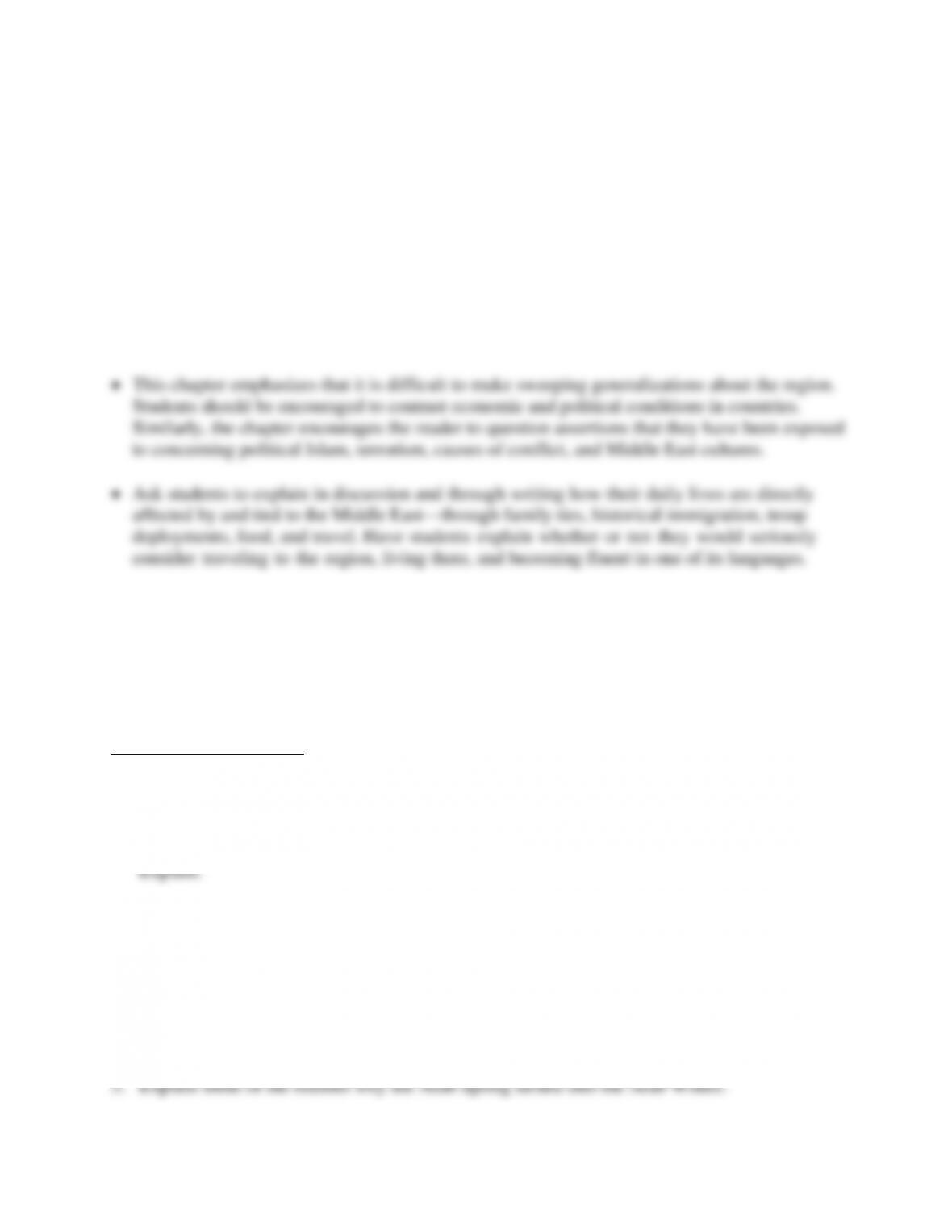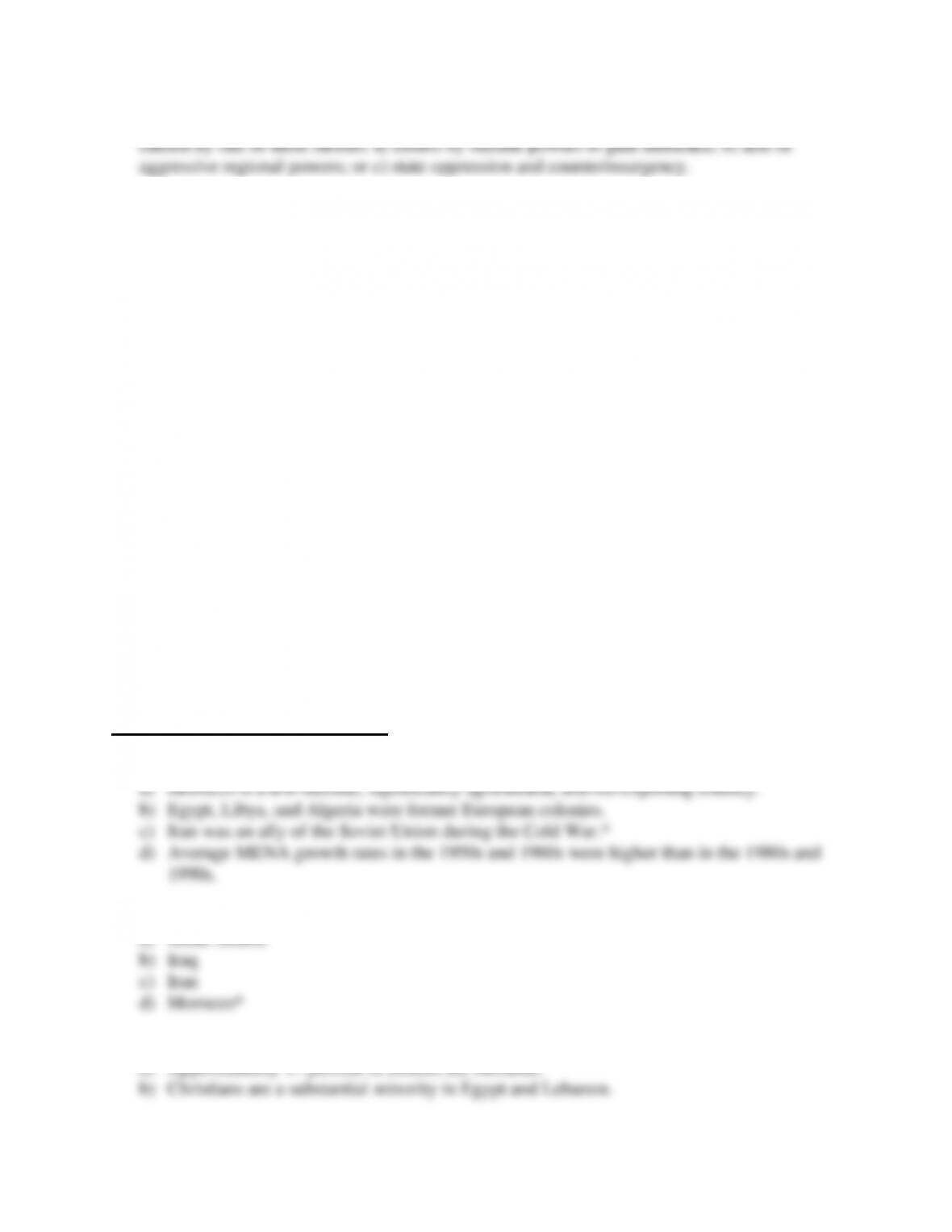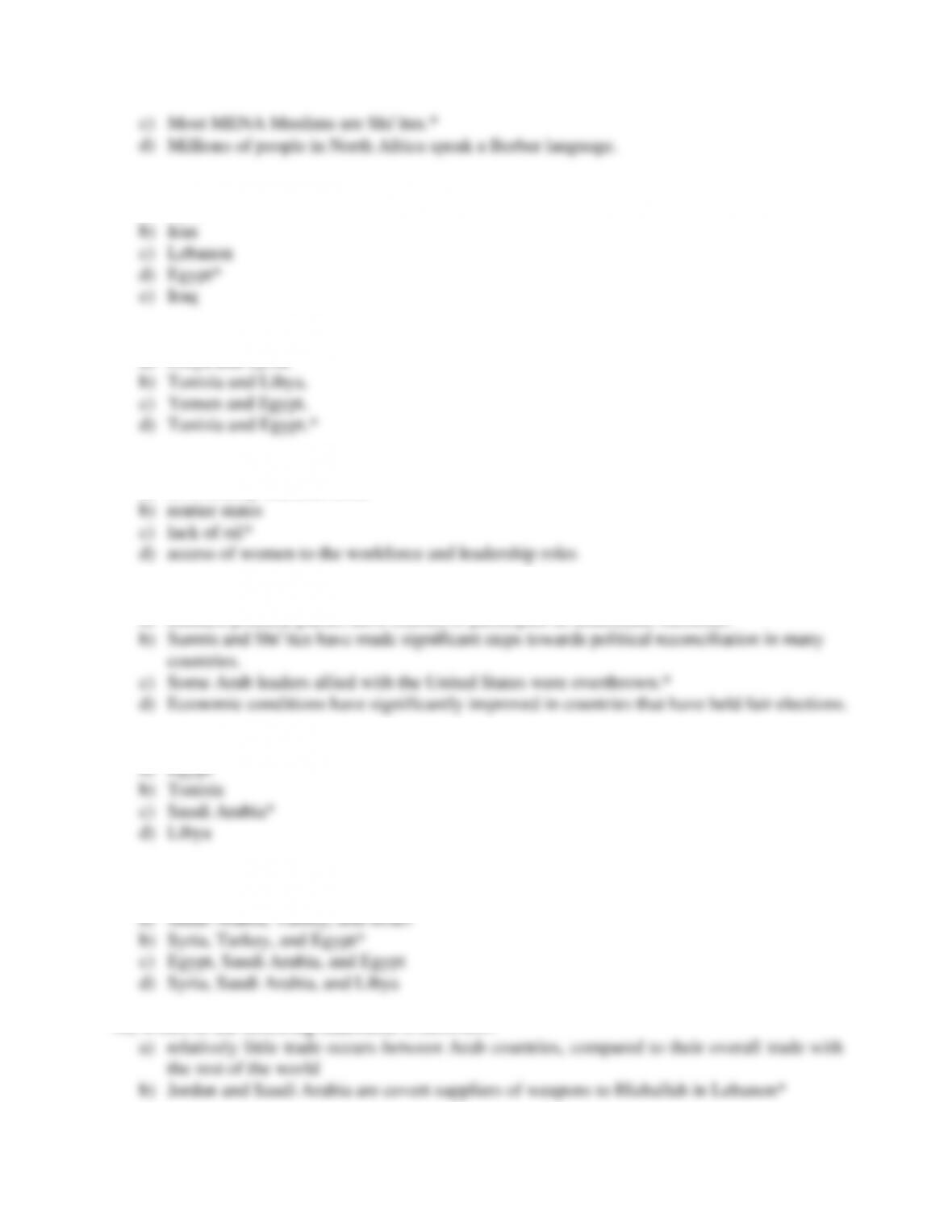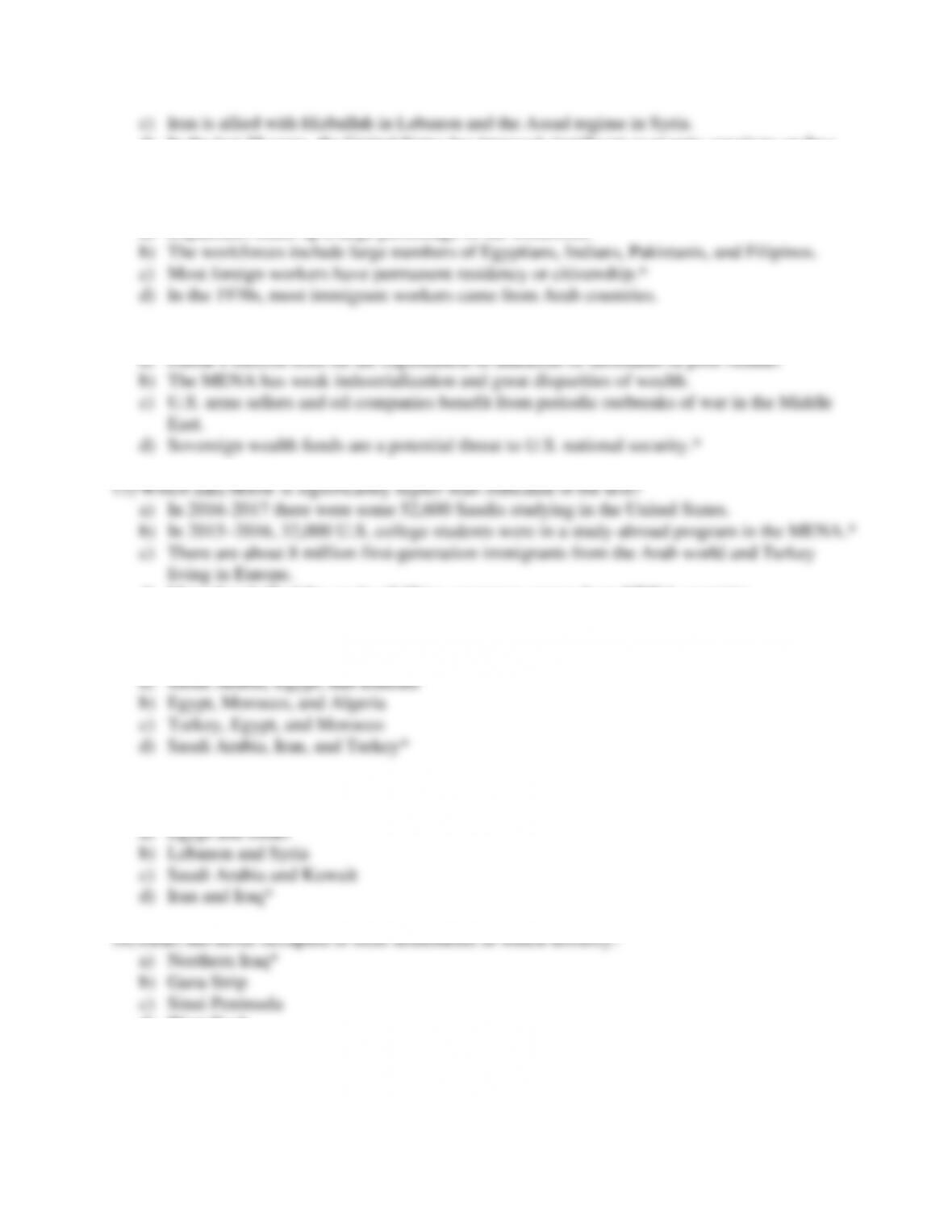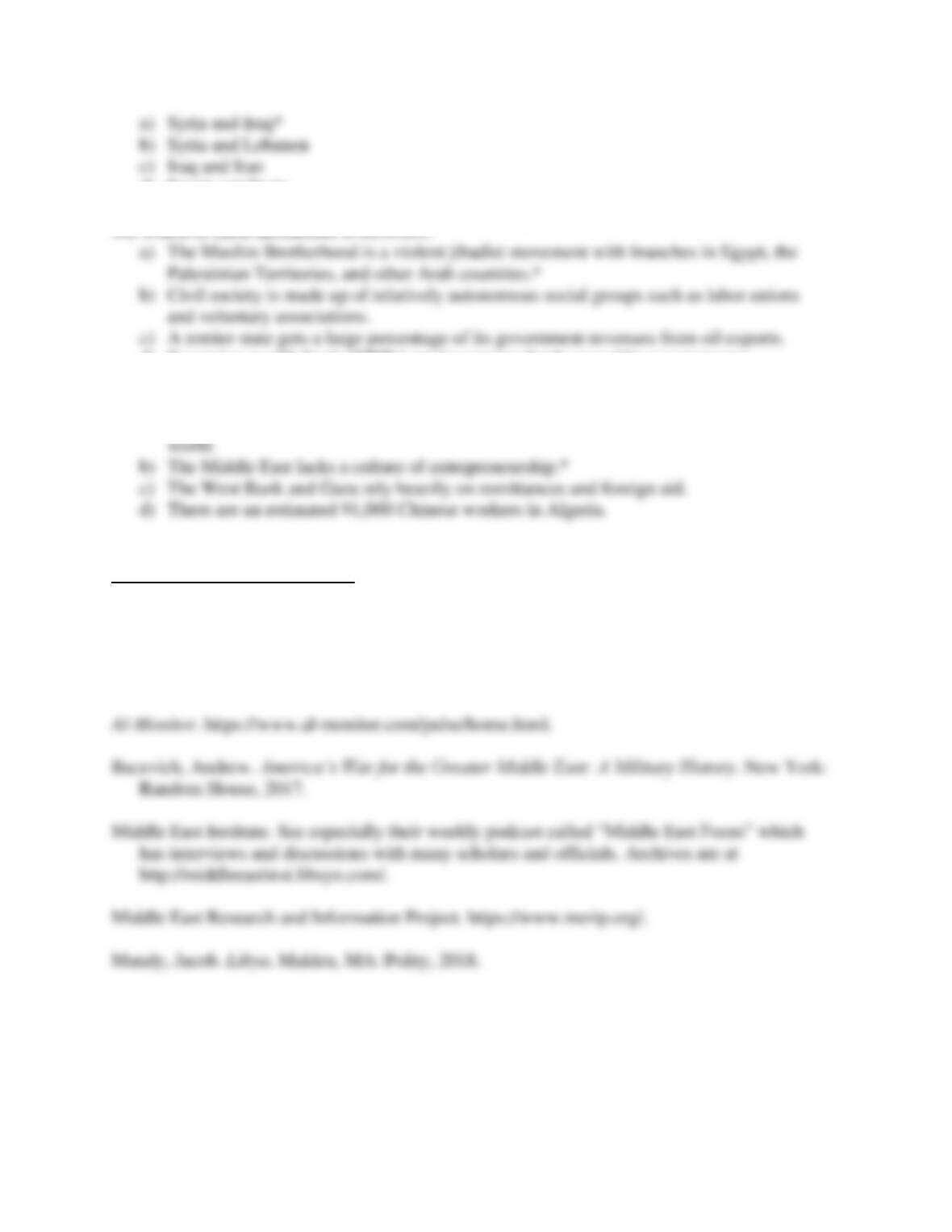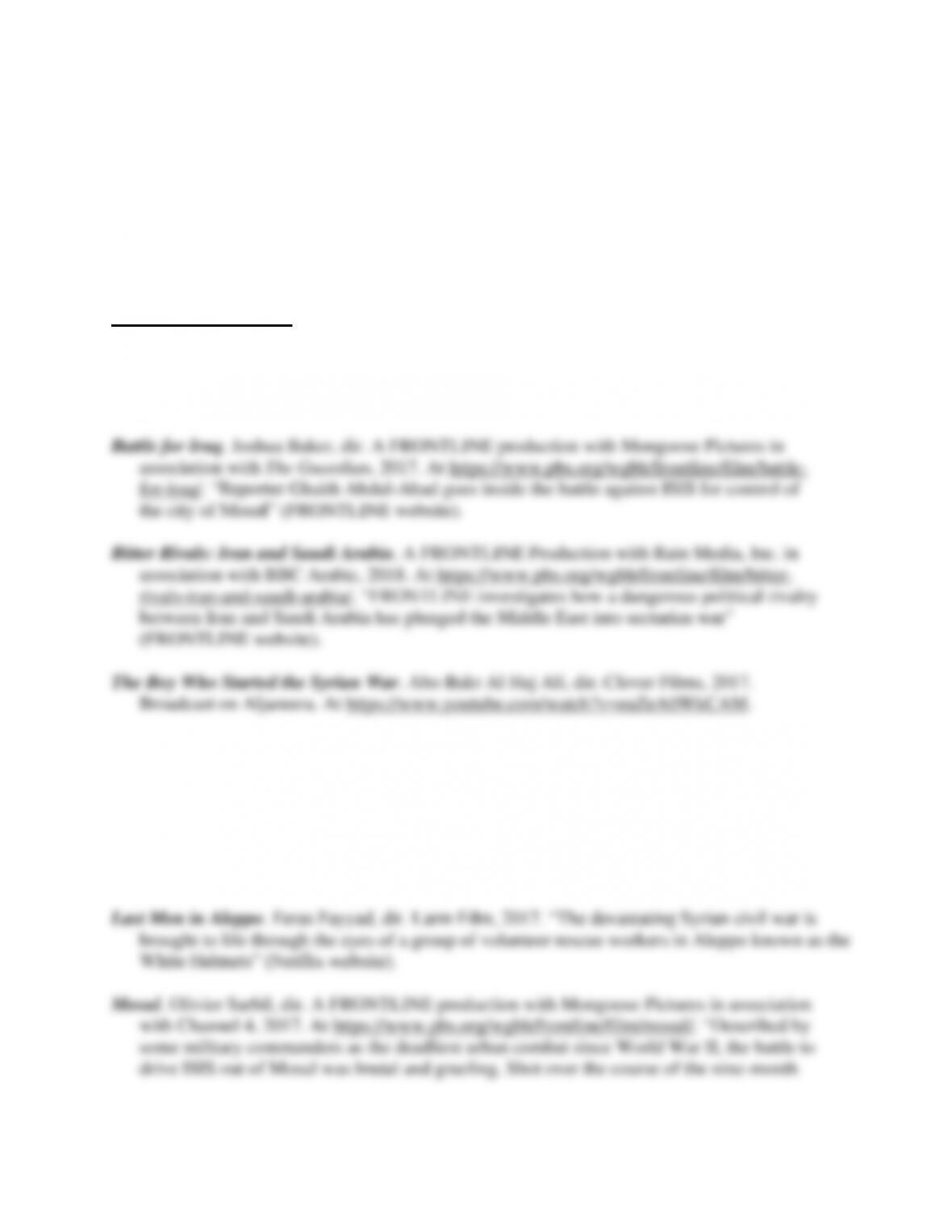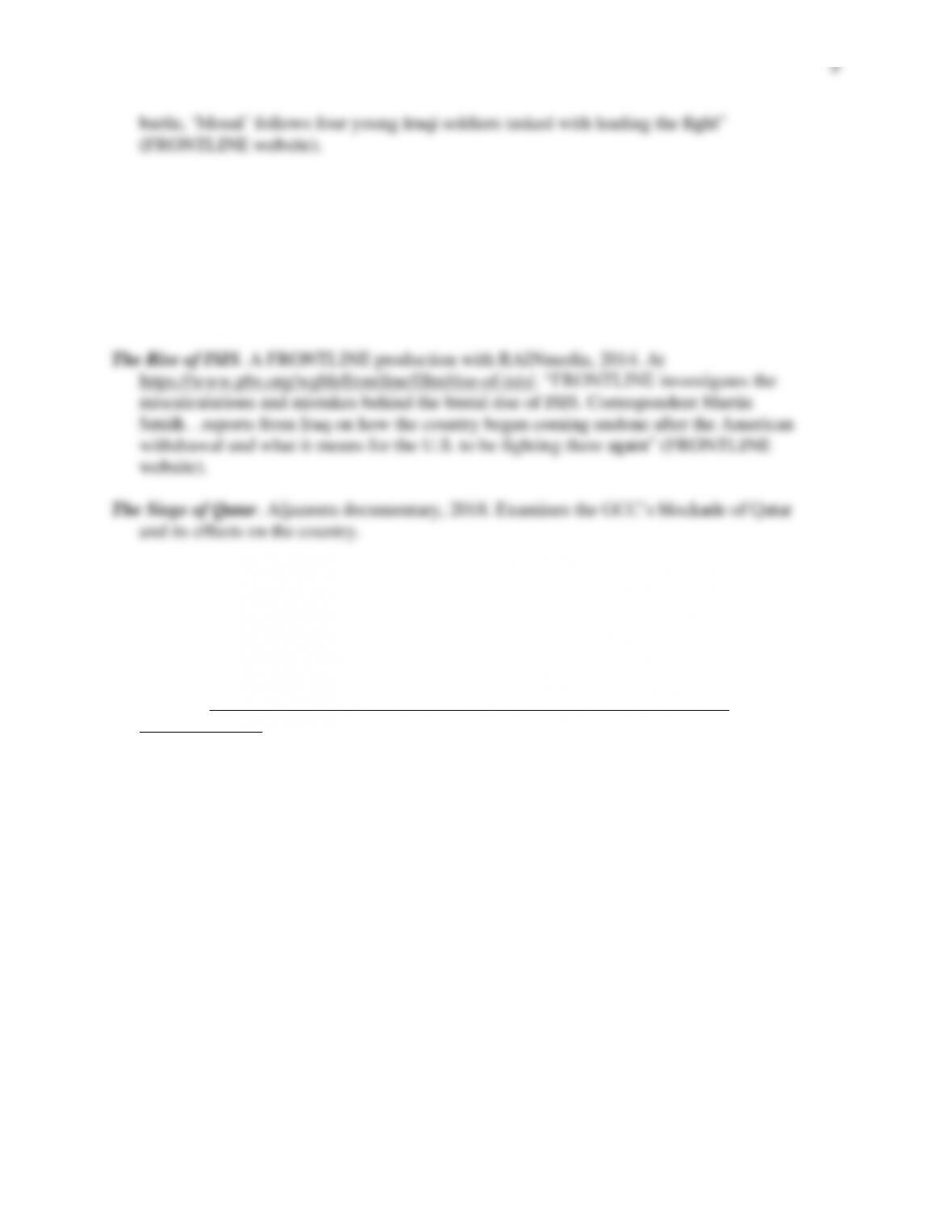• Ask your students to assess the role of the United States in the region. How do their perceptions
of this role contrast with how others in the region perceive U.S. behavior? Ask students to
explain why mainstream U.S. views on Israel often differ from those held by many in the
MENA.
• Many students will not be familiar with the location of many of the countries mentioned
in this chapter. Encourage them to make use of maps in class and other aids to understanding
the region’s political geography. Moreover, students may feel a bit overwhelmed by the names
of important leaders in the region, historically and currently. You may want to give some
background on some of the leaders in class.
• To develop the ability of students to see the interconnectedness of events in the region, ask
readers to assess how they think countries in the region would be different if the United States
had not invaded Iraq, if Palestinians and Israelis had signed a peace treaty in 2000, if the Cold
War were still around, if Iran becomes a nuclear power, or if the price of oil reaches $200 per
barrel.
Sample Essay Questions
1. Describe some of the significant political divisions and interstate alliances in the Middle
East since 2011.
2. Which Middle East countries are best prepared to face the challenges of globalization?
3. Has the Arab Spring lived up to its promises? In what ways has it changed some countries
for the better? What were unintended negative consequences? What does this tell us about
our ability as IPE scholars to predict how complex social trends will unfold in the future?
4. None of the MENA’s monarchical regimes (in Jordan, Morocco, and the GCC countries)
was ousted during the Arab Spring. What factors might explain why these regimes have
been relatively stable compared to those in Yemen, Libya, Syria, Egypt, and Tunisia?
